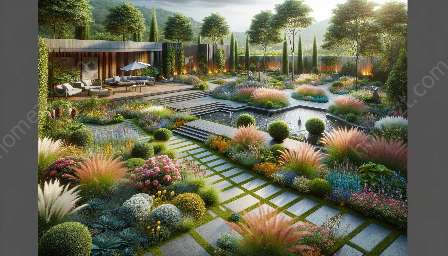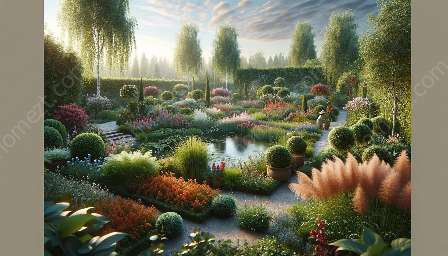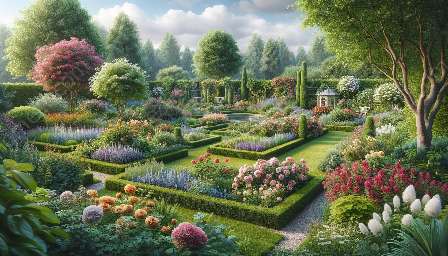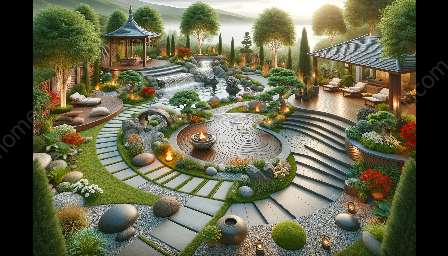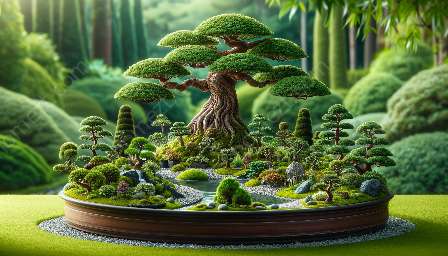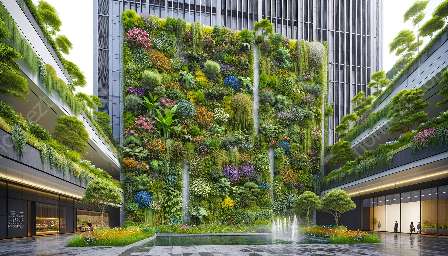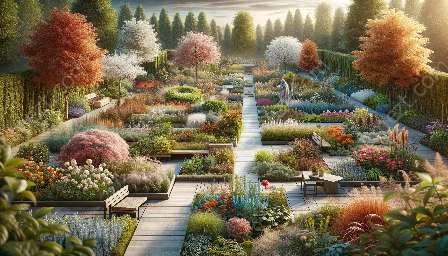When it comes to garden aesthetics, one must consider how to plan and design a garden that is both visually appealing and harmonious with nature. Seasonal changes provide an excellent opportunity to enhance the aesthetics of a garden, creating a dynamic and ever-evolving outdoor space. In this comprehensive guide, we will explore the concept of seasonal garden aesthetics and provide insights into planning and designing a garden that celebrates the beauty of each season.
Understanding Garden Aesthetics
Garden aesthetics is the practice of designing and arranging a garden to create a pleasing and harmonious visual environment. It involves considering various elements such as color, texture, form, and balance to achieve a sense of beauty and coherence within the garden space.
Planning with Aesthetics in Mind
When planning the aesthetics of a garden, it's essential to take into account the seasonal changes that occur throughout the year. Each season brings its own unique beauty, and by strategically incorporating seasonal elements into the garden design, one can create a captivating outdoor space that evolves with the passage of time.
Spring
Spring is a season of renewal and growth. As the garden awakens from its winter slumber, vibrant blooms, fresh greens, and delicate fragrances fill the air. Embrace the spirit of spring by incorporating a diverse range of colorful flowers, such as tulips, daffodils, and cherry blossoms, into the garden. The emergence of new foliage also provides an opportunity to introduce various shades of green, creating a lush and vibrant atmosphere.
Summer
Summer is a time of abundance and vitality. The garden is in full bloom, and the air is filled with the buzzing of bees and the sweet scent of flowers. To enhance the summer aesthetics of the garden, consider incorporating a mix of flowering plants, such as sunflowers, roses, and lavender, to create a tapestry of colors and textures. Additionally, the use of ornamental grasses and other heat-tolerant plants can add a touch of whimsy and movement to the garden landscape.
Fall
As summer transitions into fall, the garden undergoes a magnificent transformation. The foliage begins to take on rich hues of red, orange, and gold, creating a breathtaking display of color. To capture the essence of fall, introduce plants that boast striking autumnal foliage, such as maples, ornamental grasses, and flowering shrubs. Consider adding seasonal accents, such as pumpkins, gourds, and ornamental kale, to infuse the garden with a cozy and festive atmosphere.
Winter
Winter brings a sense of tranquility and serenity to the garden. While the vibrant colors of spring and summer fade away, the garden retains its inherent beauty through the use of structural elements and evergreen plants. Showcase the sculptural forms of bare trees and shrubs, and incorporate winter-blooming flowers, such as hellebores and snowdrops, to add subtle hints of color to the garden landscape.
Embracing Change
The key to achieving a successful seasonal garden aesthetic is to embrace the ever-changing nature of the garden. By recognizing and appreciating the beauty of each season, one can create a garden that evolves throughout the year, providing an immersive and invigorating experience for both the gardener and visitors.
Conclusion
Seasonal garden aesthetics offer a fascinating approach to garden design, allowing individuals to immerse themselves in the dynamic beauty of nature. By integrating the principles of garden aesthetics with the rhythm of the seasons, one can create a truly captivating outdoor space that evolves and enchants throughout the year.



